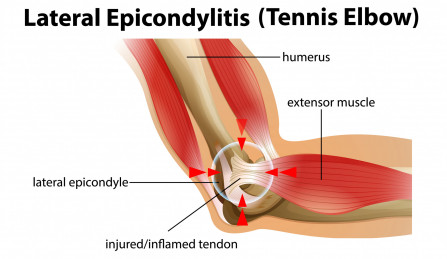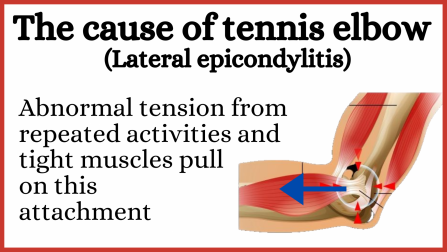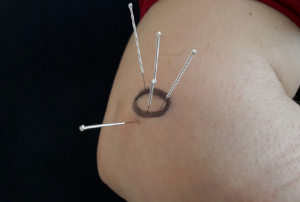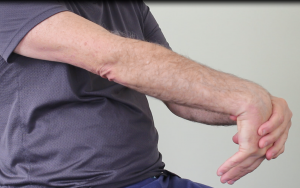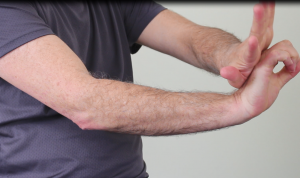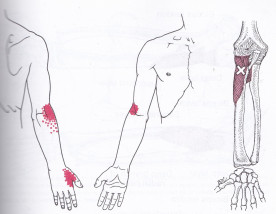Why does this attachment become inflamed or injured
As this diagram shows a large number of forearm muscles are attached to a small bony bump at the side of your elbow called the lateral epicondyle. Pull from these muscles (blue arrow) creates an area of high stress. If this stress is repeated or prolonged the attachment can become inflamed. This pull from the muscles can be either intermittent or constant.
Intermittent pulling
Intermittent pulling results from repetitive activities where the forearm muscles are used. Because of this tennis elbow is often called an overuse injury. These muscles are heavily used when playing a single handed backhand shot in tennis, hence the name tennis elbow. However, there are many other activities that can cause this, such as many tasks performed by tradespeople, or even using a keyboard.
Constant pulling
Constant pulling results from those forearm muscles being tight. The most common cause of these muscles being tight is those tender lumps massage therapists find called (myofascial) trigger points, or trigger points for short. These are are parts of the muscle that have spasmed or cramped, pulling the muscle tight. For more information please see Your Complete Guide To (Myofascial) Trigger Points .
